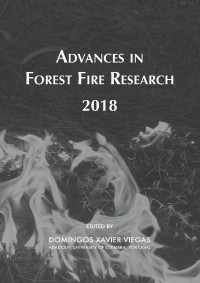Please use this identifier to cite or link to this item:
https://hdl.handle.net/10316.2/44542| Title: | Influence of thermal treatment on the bioavailability of Cu, Cd and Zn in polluted forest soils | Authors: | Xia, Xiufeng Liu, Yanyan Xu, Kai Chen, Xianfeng Huang, Xinyan Song, Shaoxian |
Keywords: | heat;heavy metals;bioavailability;soil pollution;fire ecology | Issue Date: | 2018 | Publisher: | Imprensa da Universidade de Coimbra | Journal: | http://hdl.handle.net/10316.2/44517 | Abstract: | The role of fire on the soil is a complex and comprehensive process. Fire has influences on soil physiochemical properties and hence the soil ecosystem. Meanwhile, forest soil faces an increasingly severe pollution problem due to the use of pesticide and fertilizer. The heavy metals transfer into soil and underground water and bio-accumulate in flora and fauna, which is of great concern due to the immediate risks to human and ecosystems health. This work aims to investigate the factor of heating temperature on the heavy metals in forest soils by using thermal treatment microscopically, in order to establish the correlation between the macro-scale and micro-scale research on the investigation of fire effect on heavy metals in soils; disclose the mechanisms of individual fire factor on heavy metals transformation by micro-scale experiments. Soil samples were taken from the upper layer (0-5cm) of the forest soil that situated in Huangshi Mining National Park, China where used to be a mining site and now reserved as a national park with vegetation recovery. However, the soils are still in the pollution state with high concentration of heavy metals, such as Cu, Cd, Zn, As, etc. The thermal interaction of heat is achieved by controlling the temperature and reservation time. In addition, the heating atmosphere with and without oxygen is also compared by using vacuum furnace and muffle furnace, respectively. Concentrations of heavy metals, compositions of soils are determined by ICP-MS and ICP-AES. Soils are dried and sieved. Other characterizing techniques include thermogravimetric analysis, dynamic laser light scattering, elemental analysis. The original concentrations of Cu, Cd, Zn were determined as 1303.41 mg/kg, 6.91 mg/kg, 927.1 mg/kg and 118.3mg/kg, respectively. Effect of heating on heavy metals displayed difference roles. Furthermore, the absence of oxygen may also change the fractions of heavy metals and reduce their bioavailability. The results of the effect of heating on heavy metals in soils by thermal treatment may shed light on the understanding of the mechanisms of wildfire effect on heavy metals in forest polluted soils which may provide the bias for the prediction of heavy metals transformation in the post-fire ecosystem and the exposure assessment of health risk. These mechanisms may shed light on the theory of forest fire ecology and provide measures for forest fire management and soil restoration. | URI: | https://hdl.handle.net/10316.2/44542 | ISBN: | 978-989-26-16-506 (PDF) | DOI: | 10.14195/978-989-26-16-506_25 | Rights: | open access |
| Appears in Collections: | Advances in forest fire research 2018 |
Files in This Item:
| File | Description | Size | Format | |
|---|---|---|---|---|
| influence_of_thermal_treatment.pdf | 972.57 kB | Adobe PDF |  |
Items in DSpace are protected by copyright, with all rights reserved, unless otherwise indicated.
